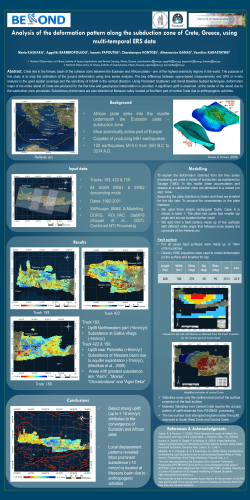
artforum_article
ATHENS/RETHYMNO, CRETE/LONDON Kalliopi Lemos BENAKI MUSEUM/IBRAHIM KHAN MOSQUE/THE CRYPT GALLERY, ST. PANCRAS CHURCH “Navigating in the Dark,” a trilogy of exhibitions by Kalliopi Lemos, was installed in three far-flung locations, suitable to its theme of psychic and geographic exploration. Curated by Maria Marangou, director of the Museum of Contemporary Art of Crete and curator of the Greek Pavilion at last year’s Venice Biennale, it was initiated at the Benaki Museum in Athens, where four large-scale biomorphic steel sculptures were placed around a honeycomb-shaped pool of water dotted with steel-mesh human heads slowly attaining various patinas. Bear All Crawl, 2009, is a wriggling larva split to reveal russet ribs; in Reaching Up High, 2009, a plantlike shoot performs a sinuous dance out of a pod, ending in a pincer resembling a Venus flytrap. The sleek black steel is textured with sensual details, such as the prickly seams on the ribs forming Space Within, 2010, a feminine shape with a welcoming womb that provokes shivers down the spine. Installed in the seventeenth-century Ibrahim Khan Mosque in Rethymno, Crete, the second show was both more visceral and more otherworldly: An enormous glowing ovoid containing hallucinatory pink aliens waving reddened phalluses, evoking something between Paul McCarthy and Louise Bourgeois, The Big Egg and the Hairy Goddesses, 2007–11, was placed under the mosque’s spectacular dome, surrounded by various vessels representing rites of passage. To one side was a fleet of open, lightreflecting white pods that portrayed a tender innocence; on the other, slender black specters stood like somber sentries at the gates of hell, their burnished surfaces achieved through repeated burning and scraping followed by the application of a wax finish. A smoothly honed trunk of chestnut wood with grain resembling waves and arranged with human heads made of salt—slowly transmogrifying as condensation and then evaporation literally return sea to sky—was placed like a sacrificial altar in front of the prayer niche. Previously a Venetian church, the highly charged sacred space is a historically layered relic of the continual invasions of the island, at the border between East and West; Lemos transformed it into an occult temple that traversed the liminal territory between physical consciousness and transcendence. In the vaulted underground crypt of London’s St. Pancras Church, the third exhibition entailed an uncanny funereal journey to the afterlife. Three bare Greek fishing boats, arranged along a narrow corridor, each contained seven ethereal creatures rendered in black steel mesh: first writhing serpents, then faceless refugees—the vessel elevated in a sort of limbo—and finally ravens, some hovering ominously like vultures in a gothic scene straight out of Poe. Down another corridor, gorgeous giant bees fashioned of white Japanese Kalliopi Lemos, The Big Egg and the Hairy Goddesses, 2007–11, mild steel and two- way acrylic mirror; papiermâché, animal hair, 13' 11⁄2" x 8' 103⁄4" x 8' 103⁄4". ibrahim Khan Mosque, rethymno, Crete. paper fluttered like angelic souls, and a nook filled with an impenetrable Arcadian field of wheat fronds beckoned like unattainable desire, both reminders of the fecund pleasures of the living earth. A deeply moving performance one evening in the space, titled Il Deserto, 2011, and made in collaboration with Greek theater director Theodoros Terzopoulos, contributed bone-chilling immediacy to the eldritch context. The viscerally meditative incantation by Italian actor Paolo Musio portrayed words as both instruments of survival and evidence of their own futility and ultimate meaninglessness. Altogether this wake for civilization was a profoundly comforting reminder of the eventual obliteration of everything and the incumbent urgency to address the nowness of life: “The one who fears death is already dead.” It could also be a metaphor for the current situation in the artist’s homeland—and the world—which is testing the limits of spiritual strength in the face of economic and environmental disaster. —Cathryn Drake
© Copyright 2025












